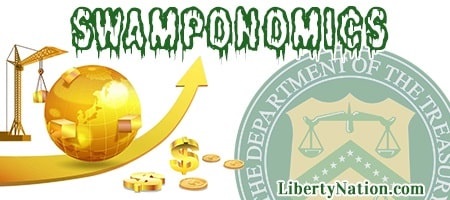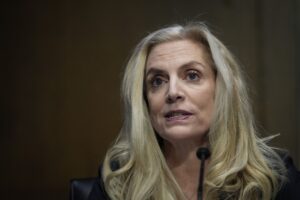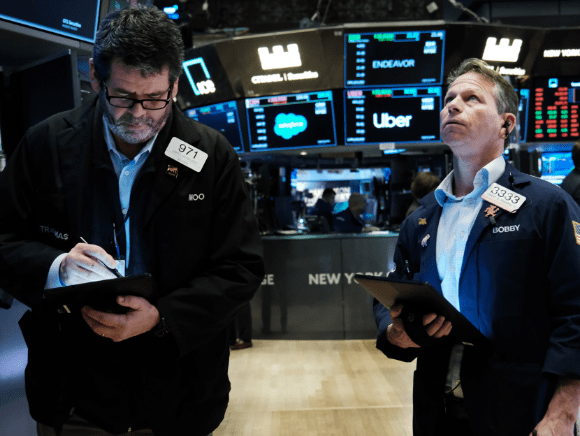Since late last year, the consensus on Wall Street has been that it is time to put a fork in US inflation because it is done. Price pressures would stabilize, businesses and consumers would experience relief, and the administration could enjoy a victory. But the rumors of inflation’s death have been greatly exaggerated, as the latest prints pour cold water on the disinflation narrative. The days of higher egg, gasoline, and service prices are here to stay, at least for now.
US Inflation Sizzles Again
The Personal Consumption Expenditures (PCE) Price Index climbed to 5.4% year-over-year in January, up from an upwardly revised 5.3% in December, according to the Bureau of Economic Analysis (BEA). PCE prices jumped 0.6% month-over-month, while the core, which strips the volatile energy and food sectors, swelled 0.6%. All the prints came in higher than economists had anticipated, surprising the financial markets. Within the PCE Price Index, the most notable points: prices for services increased 5.7%, food costs remained above 11%, and energy prices advanced 9.6%.
This comes a little more than a week after the annual US inflation rate eased to just 6.4% and jumped 0.5% month-over-month. In addition, the producer price index (PPI) also surged 0.7% from December to January.
Stocks tanked in response to the data, with the leading benchmark indexes sliding more than 1%. Treasury yields and the US Dollar Index (DXY) rallied on expectations that the Federal Reserve will continue raising interest rates heading into the summer amid elevated inflation pressures. The news also dismayed economists, but one party thought everything was fine: the White House.
“Today’s report shows we have made progress on inflation, but we have more work to do,” President Joe Biden said in a statement. The Council of Economic Advisers (CEA) for the Biden administration tweeted, “As CEA repeatedly emphasizes, monthly data can be volatile. Thus, it is important not to focus too much on one report.”
Is this a blip on the radar or part of a new upward trend on the inflation front? The February and March CPI, PPI, and PCE Price Index reports should provide answers. Be sure to grab the expensive popcorn.
What’s the Deal with Housing?
If you thought the US inflation picture was a mess, you should take a gander at the national real estate market. It is as confusing as understanding how Biden could bring about “truindenashendubbabapresser” during his time in public office. One piece of data would suggest that the housing industry is coming out of recession, while another statistic would confirm that the sector’s woes are deepening.
 Existing home sales tumbled 0.7% in January to four million units, falling short of the market consensus of 2%. New home sales soared 7.2% in January to 670,000 units, much higher than the market forecast of 0.4%. Meanwhile, mortgage applications cratered 13.3% for the week ending Feb. 17, while the 30-year mortgage rate increased 23 basis points to 6.62%.
Existing home sales tumbled 0.7% in January to four million units, falling short of the market consensus of 2%. New home sales soared 7.2% in January to 670,000 units, much higher than the market forecast of 0.4%. Meanwhile, mortgage applications cratered 13.3% for the week ending Feb. 17, while the 30-year mortgage rate increased 23 basis points to 6.62%.
Whether real estate has bottomed or is still trying to find one, the Federal Reserve conceded that a strong housing market would be detrimental to its inflation-fighting campaign. “It does make our jobs harder to bring the economy into balance. All things being equal, that means we’d have to do more with our other tools,” Minneapolis Fed Bank President Neel Kashkari told CNBC
Like inflation, the upcoming and typically busy spring buying season is on the horizon. This should prove that weakness is still prevalent or that the industry is rebounding like Jennifer Lopez’s love life.
Fed Up with White Males
Fed Vice Chair Lael Brainard has left the US central bank and will now head the National Economic Council (NEC) and serve as President Biden’s top economist. There is plenty of debate and speculation about whom Biden will select as her successor. Early reports indicated that he would tap Austan Goolsbee, the head of the Fed Bank of Chicago. But Democrats are not too keen on this choice.

Lael Brainard (Photo by Drew Angerer/Getty Images)
Is this because they desire greater intellectual diversity inside the Eccles Building? Did they suddenly turn Austrian in their economic thinking? Do they want someone with a better track record than anyone currently occupying seats at the central bank? Nope. The Democrats are demanding a different skin pigmentation or genitalia – or both.
According to Press Secretary Karine Jean-Pierre, diversity is ostensibly the most important decision for the president rather than credentials and performance. “So, I’ll just first say that clearly filling that vacancy is something that’s important to the president and we’ll certainly nominate someone in the near future. When it comes to diversity, you’ve heard this from the president, you’ve heard this from me, you’ve heard this from many of us here, diversity and representation is really important to this president,” she said.
While Goolsbee would be more of the same Keynesian-style thinking that has infiltrated the Fed since its inception, choosing candidates based on their race or gender appears to be the de facto policy for every US government agency, department, and institution. At this stage, with enough evidence to comb over, have affirmative action hires achieved anything good for the American people?




